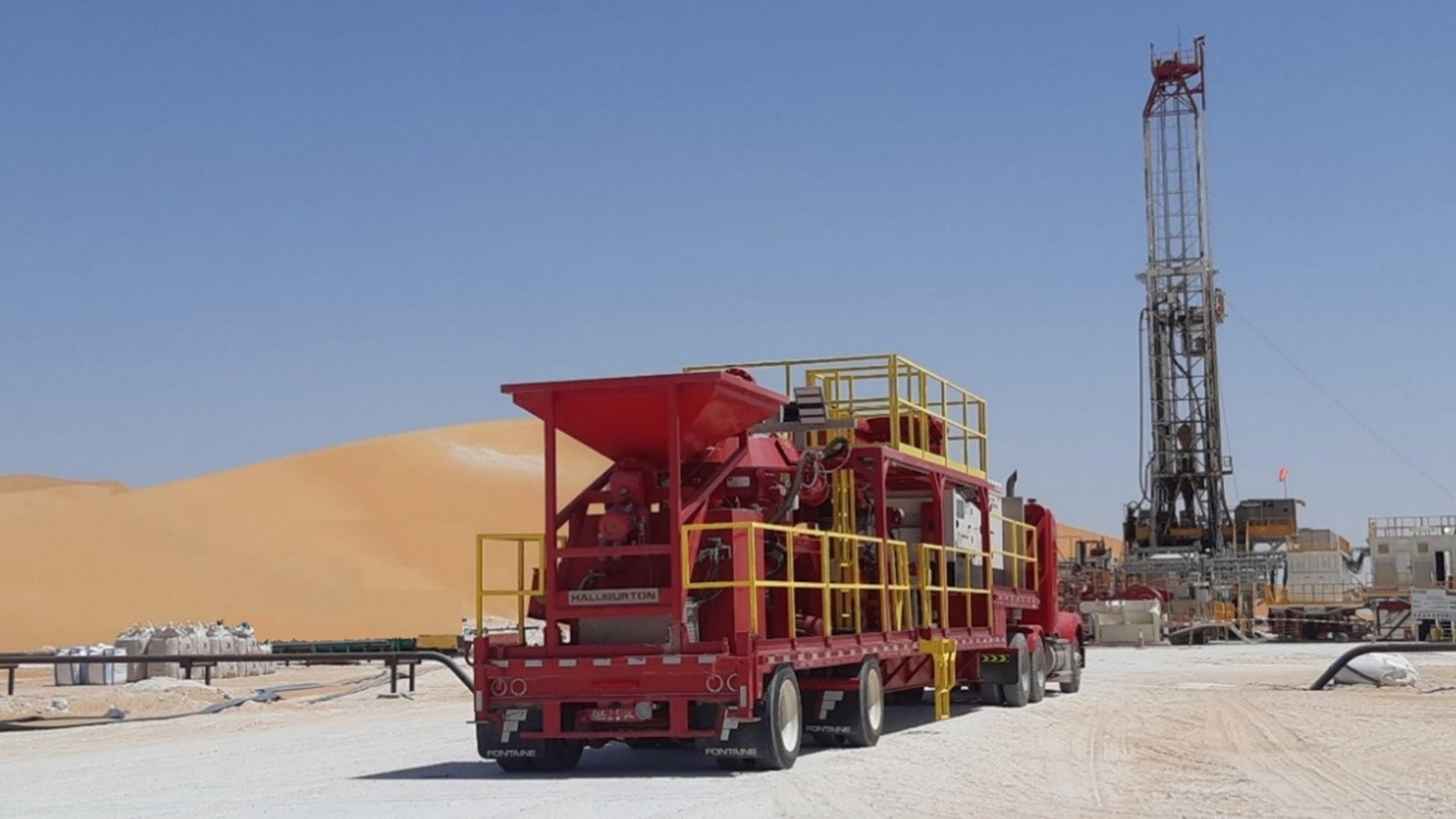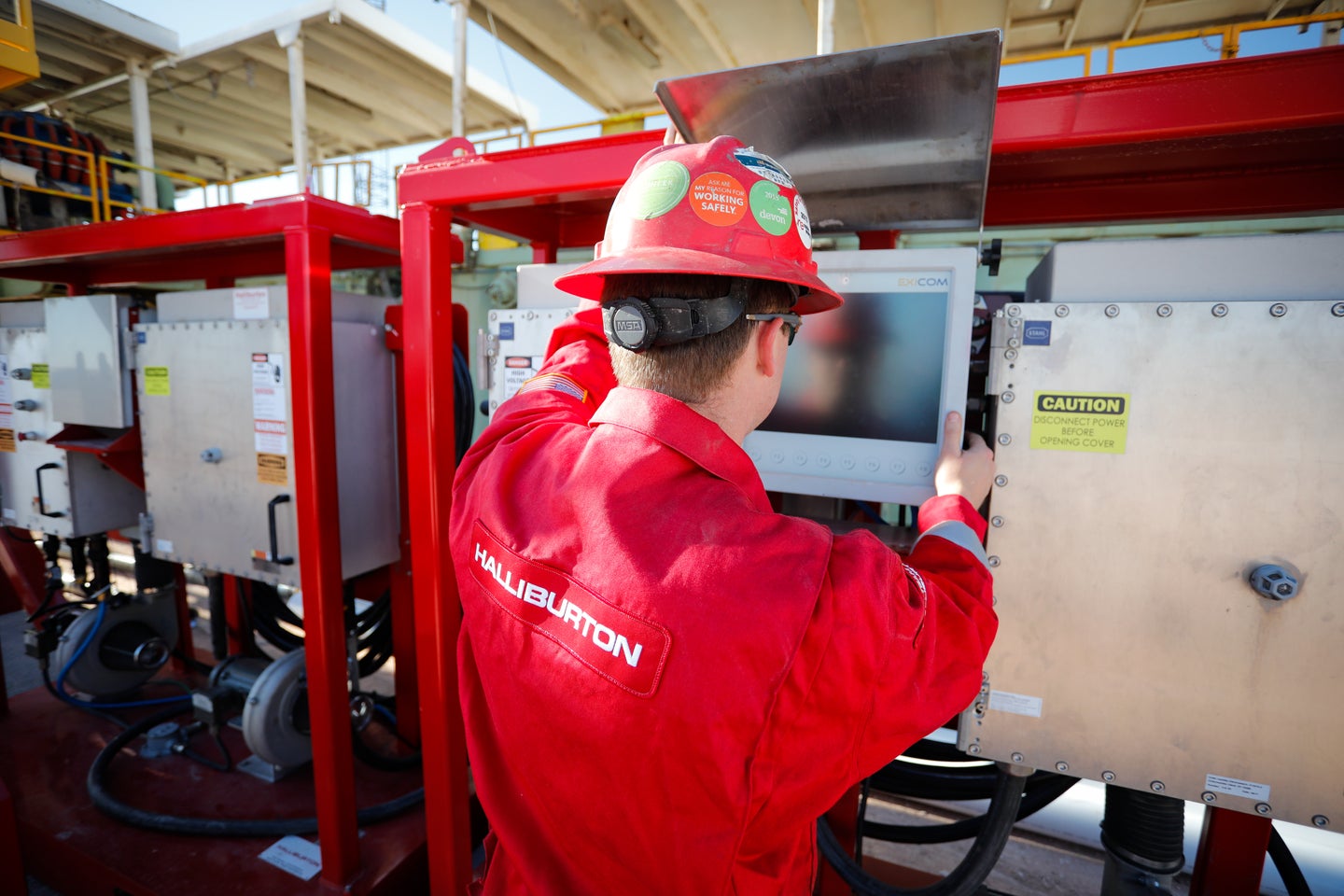 Search
Search
 Search
Search

Dryer technology, in-situ chemical treatment reduces cost and safety exposure
Download PDFMature fields

Treat oil-based mud to below <1% oil-on-cuttings levels

Oman

Mobile vertical cuttings dryer (MVCD) reduces total petroleum hydrocarbon (TPH) levels to less than 5%, followed by in-situ chemical treatment to achieve TPH levels of less than 1%
A major operator in Oman drilled two vertical gas wells in the central onshore region as part of a deep gas exploration project. One section of these wells required oil-based mud (OBM) because of formation-related challenges. According to the country’s environmental regulations, OBM cuttings must be treated to less than 1% total petroleum hydrocarbons (TPH) before disposal. The drilled OBM cuttings were collected and stored in a centralized facility outside the drilling site.
The separation solutions team in Oman provided an in-situ chemical treatment and a mobile vertical cuttings dryer (MVCD) to treat the contaminated cuttings. The in-situ chemical treatment (ISCT) involves a blend of surfactants designed to emulsify the hydrocarbons and make them more accessible for local microbes to consume.
The MVCD technology features a trailer-mounted system that contains a cuttings dryer and processing centrifuge. It was selected to help deliver economic, health, safety, and environmental (HSE) benefits for the project.
According to Oman’s health and environmental regulations, all discarded OBM cuttings from drilling operations must be treated to reduce TPH to less than 1%. While this can be accomplished with thermal treatment, the process involves several challenges, such as increased HSE risks with the transportation of wet cuttings to a thermal facility, higher CO2 emissions, and elevated treatment costs per ton.
The primary challenge was to identify a cost-effective, onsite method to eliminate the need for trucks and their associated diesel consumption. In addition, the operator aimed to reduce the risk of spills by transporting them between the well site and the waste yard.
Halliburton proposed an innovative in-situ chemical treatment and MVCD system to address the operator’s concerns. The MVCD system can reduce oil-on cuttings (OOC) to less than 5%. The processed cuttings become compacted and reduce the volume hauled from the rig site for final disposal. A unique bioremediation technology was used to reduce oil retention on cuttings to less than 1% TPH.
Cubic meters of drilled cuttings generated for one well
Cubic meters of mud returned to liquid mud plant
TPH level for treated cuttings in eight weeks
Approximately 85 m³ of drilled cuttings were generated for well #1 while drilling the 17½-in. interval with a drilled length of 527 meters. The total recovered ENVIROMULTM invert emulsion fluid (OBM) recovered from the MVCD system was 23 m³ and returned to the liquid mud plant with acceptable properties.
Transportation of wet cuttings to the waste management yard was eliminated and all treated cuttings (with less than 5% TPH after MVCD) were disposed of in an on-site pit for further in-situ treatment. The in-situ bioremediation treatment was completed in less than eight weeks, which resulted in a final lab result of 0.6% OOC. This level is below the country’s HSE legislative requirements.
The treated OBM cuttings were approved by the local authorities, the drilling site was cleaned, and the waste pit was buried.
